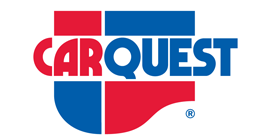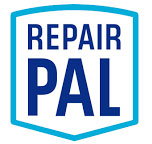
Archive for October 2023Giving CV Joints the Boot! (CV Joint and Boot Replacement)Posted October 29, 2023 8:31 AMEver wonder how your vehicle’s transmission is connected to your wheels? After all, when you hit a pothole or some other uneven part of a road’s surface, there has to be something that can maintain the connection between the transmission and the wheel yet keep everything moving at the same speed. That very cool device is called a CV joint, a kind of driveshaft running to each wheel. The CV stands for constant velocity because it keeps the drive wheels moving at a constant speed (velocity). They’re used mostly on front-wheel drive vehicles but also in rear-wheel and all-wheel drive vehicles. The joints move up and down and adjust to bumpy surfaces. Plus, they are covered in a rubber boot which protects them from road debris and also holds lubrication in. There’s a CV joint and boot on the transmission side and one on the wheel side. Unfortunately, the spot that usually fails first is that rubber protective cover (the boot). After a lot of wear, tear, bumps, road hazards, heat, and you name it, the rubber rips and the lubrication leaks out. At that point, it must be replaced. Here are signs to tell if your CV joint is bad.
Sometimes if a broken boot early is caught early, a technician can pack in new grease and replace just the boot. But if the lubrication has leaked out and the joint is already wearing badly, the CV and boot both have to be replaced. Give your vehicle the boot (as in a new boot) and CV joint, and you’ll be back on the road to your next destination. Triple A Automotive Motor Oil?The Synthetic Advantage (Synthetic oil vs Conventional)Posted October 22, 2023 7:13 AMYou’ve probably already heard that regular oil changes are extremely important for the health of your vehicle’s engine. That’s sound advice. But what you might not know is when it comes to motor oil, the real thing may not be the best thing for your engine. There are different types of motor oil:
The first thing you need to know is that most new engines require synthetic oil. If synthetic oil is recommended for your car – you MUST use it. For the rest, there are many advantages to using synthetic oil over conventional oil.
Synthetic oil can be a better choice if you live in an extremely hot or cold climate or put a lot of strain on your engine by towing or carrying heavy loads. It also may be good for older engines that sometimes have a tendency to develop sludge. Synthetic oil is a more expensive option, but you likely won’t have to have your oil changed as often. Some synthetics are recommended to last 10,000-15,000 miles/16,000-24,000 km between changes. You might also consider a synthetic blend that gives you some of the advantages of synthetic oil at a lower cost. Have a talk with your service adviser about recommendations for what will best suit your vehicle and driving habits. It’s interesting to note that in recent years, more than one out of two vehicle owners are opting for synthetic oil or a synthetic blend when they get their oil changed. Sounds like they’re on to something. In the long run, if you have fewer oil changes with synthetics, you’ll use less oil, a bonus for our environment. Triple A Automotive Maintaining Your Older Car in Clovis, CAPosted October 15, 2023 12:20 PM
Triple A Automotive THE IMPORTANCE OF VISIBILITY (Cleaning Vehicle Glass)Posted October 8, 2023 10:56 AMWe've all been through it. The vehicle ahead of us kicks up mud, slush, snow or salt on our windshield and we can't see a thing. And not being able to see a thing when we're driving? Not a good thing. Debris on a vehicle's glass can be blinding when driving directly into the sun. And other things can ruin visibility: scratches on the glass, fogged windows, mineral deposits. So lets make one thing clear: Your windows. Here are some tips.
Now that you have clean windows, here's how to keep 'em clean.
Your service advisor at Triple A Automotive will be able to recommend good wiper blades for your vehicle and install them properly. Visibility. See what we mean? Triple A Automotive Have a Ball! Know your Ball Joints (Ball Joints)Posted October 1, 2023 8:38 AMWe all have joints in our own skeletal system, but did you know your vehicle has some joints of its own? One of the most important is called a ball joint. One of the interesting things is that it's somewhat similar to the ball and socket joints we have in our hips and shoulders. A ball joint allows two parts it joins together to move in more than one direction at the same time. Think about your wheels. They have to move up and down when there are bumps in the road but in sideways directions when you are making a turn. As you can see, the ball joints are important for your steering and handling to work correctly. Since ball joints do so much, they can wear out and become loose. When the ball wears down or the socket gets worn, there can be too much play in them. It can get so bad that the ball can come out of the socket and your wheel can fall off, a dangerous situation. Ball joints can also seize up. Some of them are sealed and never require maintenance; others require periodic lubrication. Here are some signs that your ball joints are going bad:
The earlier a failing ball joint is discovered, the better. The best way is to have regular inspections by a technician. Your service facility will periodically check ball joints at intervals recommended by the manufacturer. The cost to replace them can vary widely depending on whether you have a vehicle with a 2-ball or 4-ball configuration. Also, sometimes just the joints can be replaced, but other times they are part of a larger control arm assembly that has to have all the parts replaced at the same time. Your vehicle's proper steering, handling and tire wear all contribute to a better, safer driving experience. Make sure your ball joints are up to the job. Triple A Automotive | ||
SearchArchiveApril 2016 (16)May 2016 (5) June 2016 (4) July 2016 (4) August 2016 (5) September 2016 (4) October 2016 (5) November 2016 (4) December 2016 (4) January 2017 (5) February 2017 (4) March 2017 (4) April 2017 (4) May 2017 (5) June 2017 (4) July 2017 (5) August 2017 (3) September 2017 (3) October 2017 (5) November 2017 (4) December 2017 (2) January 2018 (5) February 2018 (4) March 2018 (4) April 2018 (5) May 2018 (4) June 2018 (4) July 2018 (5) August 2018 (4) September 2018 (5) October 2018 (4) November 2018 (4) December 2018 (5) January 2019 (5) February 2019 (4) March 2019 (5) April 2019 (4) May 2019 (4) June 2019 (5) July 2019 (4) August 2019 (4) September 2019 (5) October 2019 (4) November 2019 (4) December 2019 (5) January 2020 (5) February 2020 (4) March 2020 (5) April 2020 (4) May 2020 (5) June 2020 (4) July 2020 (4) August 2020 (5) September 2020 (4) October 2020 (4) November 2020 (5) December 2020 (4) January 2021 (6) February 2021 (4) March 2021 (4) April 2021 (4) May 2021 (5) June 2021 (4) July 2021 (4) August 2021 (5) September 2021 (4) October 2021 (5) November 2021 (4) December 2021 (4) January 2022 (6) February 2022 (4) March 2022 (4) April 2022 (4) May 2022 (5) June 2022 (4) July 2022 (5) August 2022 (4) September 2022 (4) October 2022 (5) November 2022 (4) December 2022 (4) January 2023 (5) February 2023 (4) March 2023 (4) April 2023 (5) May 2023 (4) June 2023 (4) July 2023 (5) August 2023 (4) September 2023 (4) October 2023 (5) November 2023 (4) December 2023 (5) January 2024 (5) February 2024 (4) March 2024 (5) April 2024 (3) | CategoriesMaintenance (43)Fuel System (42)Alignment (13)Tires and Wheels (34)Windshield Wipers (6)Fluids (14)Serpentine Belt (5)Inspection (8)Exhaust (8)Safety (6)Transmission (8)Emergency Items (1)Service Standards (8)Cooling System (15)Air Conditioning (11)Drive Train (9)Service Intervals (8)Shocks & Struts (7)Battery (15)Monitoring System (2)Suspension (3)Alternator (2)Brakes (10)Parts (7)Differential Service (2)Headlamps (4)Cabin Air Filter (5)Diagnostics (5)Automotive News (5)Steering (8)Warranty (1)Engine Air Filter (2)Fuel Economy (8)Dashboard (3)What Customers Should Know (50)Keys to a long lasting vehicle (4)Check Engine Light (5)Timing Belt (6)Auto Safety (6)Older Vehicles (3)Winter Prep (4)Fuel Saving Tip: Slow Down (2)Diesel Maintenance (1)Trip Inspection (2)TPMS (1)Tires (6)Tire Rotation and Balancing (1)Safe Driving (1)Water Pump (1)Fuel Pump (1)Wheel Bearings (1)Oil Change (4)Spark Plugs (2)Brake Service (1)Transfer Case Service (1) | |
What our clients are saying about us
We have established longterm and stable partnerships with various clients thanks to our excellence in solving their automotive needs!
Some of the nicest people I have ever met!! Did an amazing job!!!10/10 would recommend!!!

This business has good people, they are transparent with prices and issues with your car and have been helpful to me many times. I highly recommend their services.









